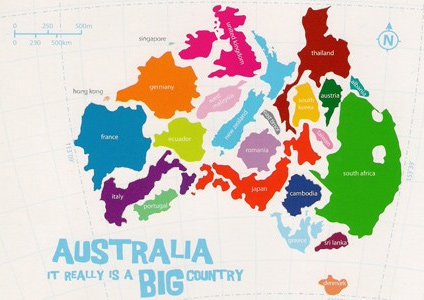As identified in Dr. Swallow’s video, a critical understanding of cultural communication is vital within this global culture. Extensive communication enables a higher competence of various lifestyle’s is fundamental in gaining a cultural intelligence. In regards to this, international students enable a strong example of cultural adaptation and cultural awareness, through an ability of social communication functions to connect with individuals from different cultures.
For example, I have not travelled outside of Australia, and while I have met people of different cultures, I have not fully attempted to gain a comprehensive understanding of their country and customs. Kell (2006) research reflects the idea of well-travelled individuals having more cultural competence and remove the barriers of parochialism, with a “student commented that ‘Australians’ who had been out of the country were much easier to approach and were “a lot more friendly” than those who had never left the country.”

The image above demonstrates how culturally diverse a nation can be. 2011 Census explains that over a quarter (26%) of Australia’s population was born overseas and a further one fifth (20%) had at least one overseas-born parent. Census Executive Director, Andrew Henderson describes the diversity with an ‘increasingly more people born in Asia and other parts of the world now calling Australia home.’ This development in diversity outlinesthe importance of cultural competency in all aspects of life.
Furthermore the concept of interculturality outlines the importance of a more diverse and culturally aware society, as explained by Xiaodong below:
“The establishment of intercultural connection suggests that individuals have to go beyond their cultural boundary to initiate a contact with members of another culture.
In other words, through mutual adaptation the two parties are resocialized themselves into a larger intercultural community and develop a more inclusive identity.”
Xiaodong, D, & Guo-Ming, C 2015, ‘On Interculturality and Intercultural Communication Competence’
Xiaodong exemplifies how interculturality:
- Bridges cultural gaps
- Develops mutual understanding of cultures and
- Enables interactions throughout and across cultures
As such, international students are transformed into culturally interconnected individuals, who interact with ease between the sameness and the otherness; and in which differences are positively recognized and diverse ideas mingle, clash, evaluate and illuminate with one another. Reflectively, interculturality along with cultural competence denotes a state in which cultural differences are legitimized, accommodated, and transformed into the source of innovation.
References:
- Xiaodong, D, & Guo-Ming, C 2015, ‘On Interculturality and Intercultural Communication Competence’, China Media Research, 11, 3, pp. 102-105, Communication & Mass Media Complete, EBSCOhost, viewed 24 August 2016.
- Kell & Vogl, 2006, ‘International Students: Negotiating life and study in Australia through Australian Englishes’, Everyday Multiculturalism Conference Proceedings, Macquarie University 28-29 September 2006, pp.
- Dr Deborah Swallow, (2016), online video, Intercultural Communication Adventure with Little Pilot, Feb 20 2012, YouTube, https://www.youtube.com/watch?v=PSt_op3fQck
- Cultural Intelligence in Australia Convictcreations.com,2016) http://www.convictcreations.com/culture/countrycomparison.html
- Abs.gov.au. (2016). 2011 Census data provides a snapshot of Australia’s cultural diversity. [online] Available at: http://www.abs.gov.au/websitedbs/censushome.nsf/home/CO-58 [Accessed 25 Aug. 2016]
- Abs.gov.au. (2016). 2071.0 – Reflecting a Nation: Stories from the 2011 Census, 2012–2013. [online] Available at: http://www.abs.gov.au/ausstats/abs@.nsf/Lookup/2071.0main+features902012-2013 [Accessed 25 Aug. 2016].
